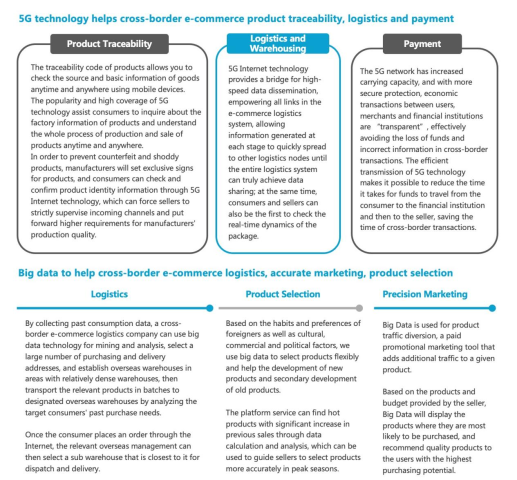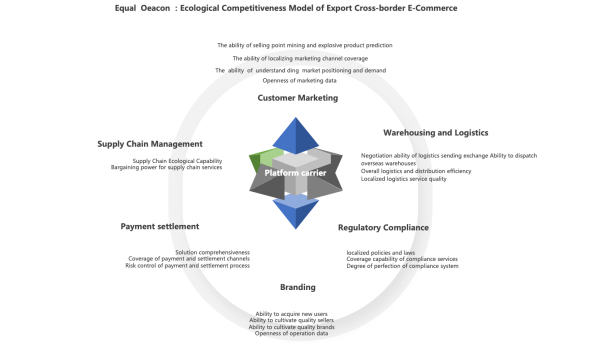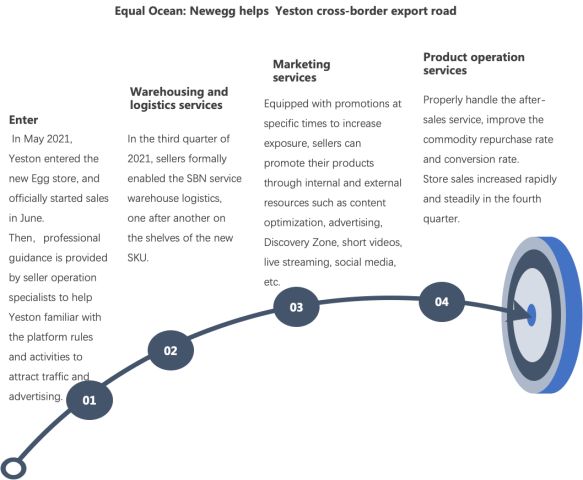The "2022-2023 China Cross-border Export B2C E-Commerce White Paper - Business Ecology" was published by EqualOcean to provide up-to-date information to the cross-border e-commerce market and promote the sector's focus on ecological development.
Over the past decade, China's cross-border e-commerce market has grown steadily, benefiting from favorable regulatory initiatives and advancements in digitization. The export e-commerce market has experienced continuous expansion, with an increasing integration of its ecosystem. Therefore, it is crucial to effectively operate cross-border e-commerce and meet the diverse needs of clients worldwide.
Core Insights of the report:
1. The cross-border e-commerce sector is integrating its ecosystem. To achieve rapid development, it is crucial to build ecosystemic competitive advantages and identify third-party platforms that can integrate all ecosystemic services and support business growth.
2. Marketing tactics in international e-commerce differ from those used in other markets and product categories. Accurate advertising operations are increasingly important, and branding, social network marketing, and interactive content marketing are the three most successful strategies for attracting international customers. Global consumers are also interested in live streaming, storytelling, brand interaction, and other promotional techniques.
3. Short video marketing will continue to be the dominant marketing strategy in the fragmented era. Over 70% of buyers prefer to watch brief videos to learn more about products. Additionally, e-commerce live streaming is an emerging industry in foreign markets, offering a brand-new sector with enormous potential.
Core excerpt of the report:
With the integration of new business models and technologies, cross-border e-commerce has ushered in new developments.
The fusion of innovative strategies and advanced technologies has revolutionized the industry. Besides improving the social media+e-commerce and live-streaming e-commerce models, 5G and big data technologies have matured cross-border e-commerce operations by enhancing product traceability, logistics, payment, and selection.

Cross-border marketing needs to diversify and advance fully
Companies should prepare in advance by establishing up layaways as new forms develop.
The development of conventional marketing strategies and the establishment of marketing barriers in accordance with the marketing requirements of local consumers are crucial for cross-border e-commerce businesses. They should develop them in advance and keep appropriate sensitivity to new marketing forms during this time.
According to consumer research, brand marketing, social network marketing, and interactive content marketing are now the three strategies that are most appealing to consumers worldwide. Global consumers are also equally interested in brand connection, creativity, narrative, live streaming, and other forms of product promotion.
To achieve significant growth in cross-border e-commerce, companies need to create competitive moat
In order for a cross-border e-commerce business to grow, it must go through a process of transformation from coarse to fine, the creation of end-to-end links, and completion of the following steps: initial establishment, marketing, operations, logistics performance, payment and settlement, followed by overall supply chain management and compliance, multi-channel, three-dimensional chain layout.
It might be challenging for independent businesses to achieve full-chain integration, though. The support of partners is crucial for creating an environment that is fully functional.
The following capabilities must be provided by the solutions for each segment, according on an EO study of the issues faced by the various cross-border e-commerce firms (figure 1).

figure 1
Cross-border e-commerce has been ecologically constructed in a more independwnt, single-point deployment condition, with autonomous ecology partners to address the single-point issue.
To accomplish leapfrogging development, cross-border e-commerce business must create their own ecological barriers to competition identify middlemen who can connect the ecological services of each connection, and place a greateremphasis on third-party platforms.
For instance, external platforms like Amazon, New Egg, Ebay, and others have the capacity to offer a full range of services, inclucding site development, marketing, warehousing, logistics, operations, payments, to supply chain management and other aspects of supporting; focus on specificity, refinement while meeting compliance needs; based on the platform’s size, can form a stonger negotiating position, to provide more cost-effective, more reliable services.
Take New Egg Group as an example, they provide comprehensive and integrated services for Chinese sellers, including and not limited to: cross-border e-commerce industry and platform operation training, platform station optimization and operation, independent station services, IT and technology services, supply chain services, financial services, data services, warehousing and logistics services, compliance and intellectual property services, overseas marketing synergy, talent services and policy support, brand overseas expansion, product selection services, OEM and other service contents; they have accumulated years of integrated e-commerce service experience and cases integrating marketing, supply chain and technology solutions.
Practice Example: Yeston Overseas Operation

Media Contact
Company Name: Am-News
Contact Person: JANE
Email: Send Email
Country: United States
Website: www.am-news.com